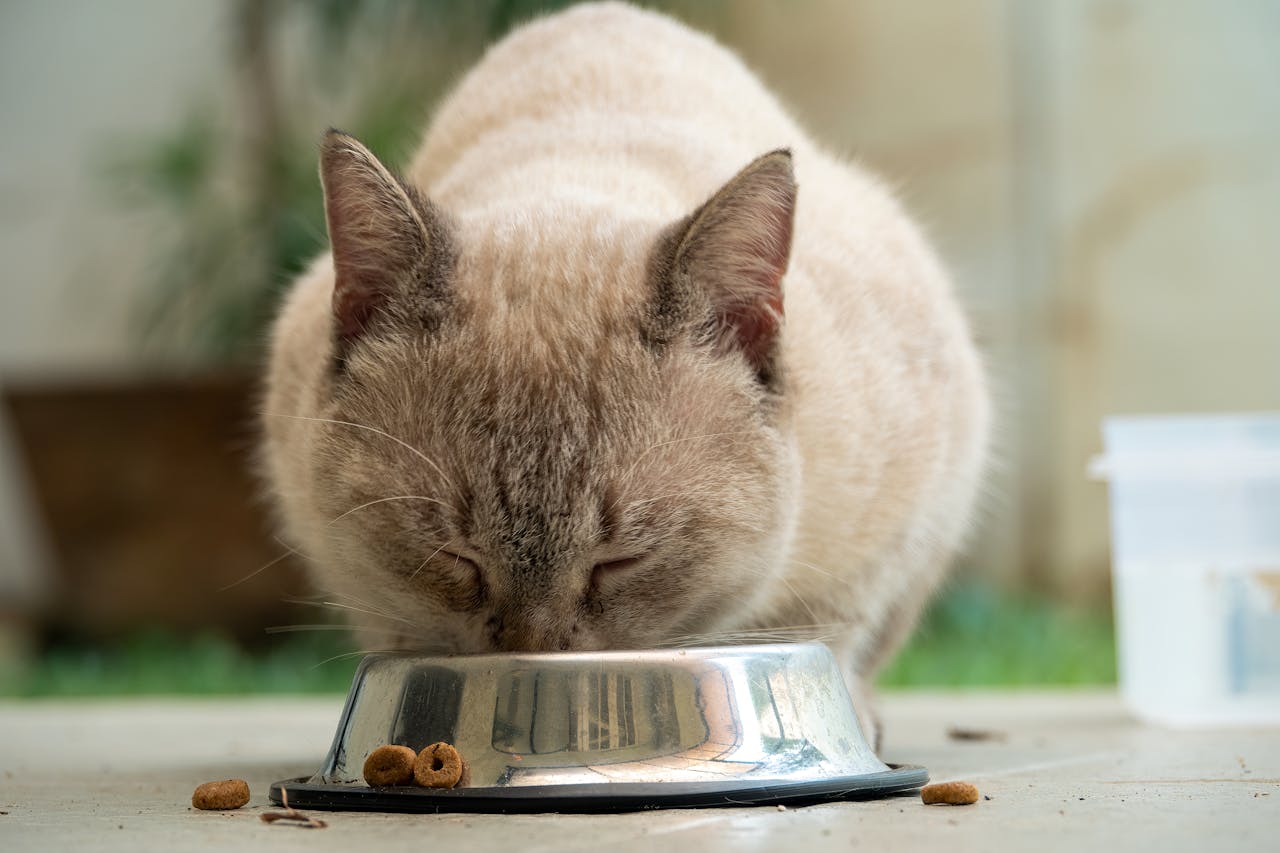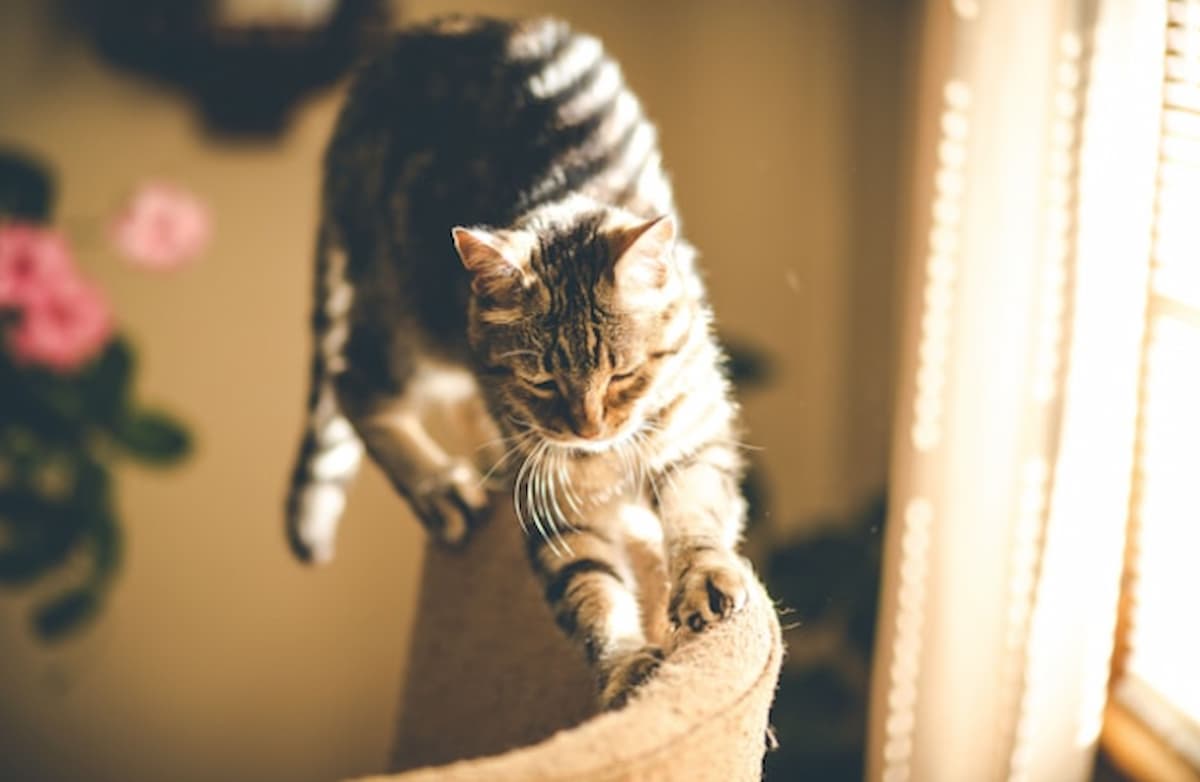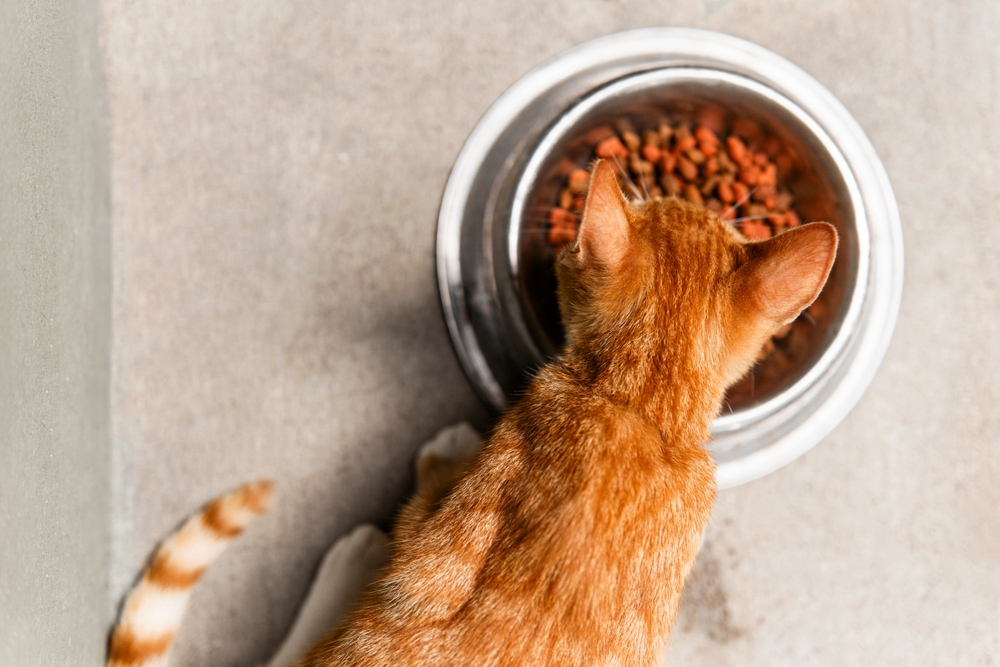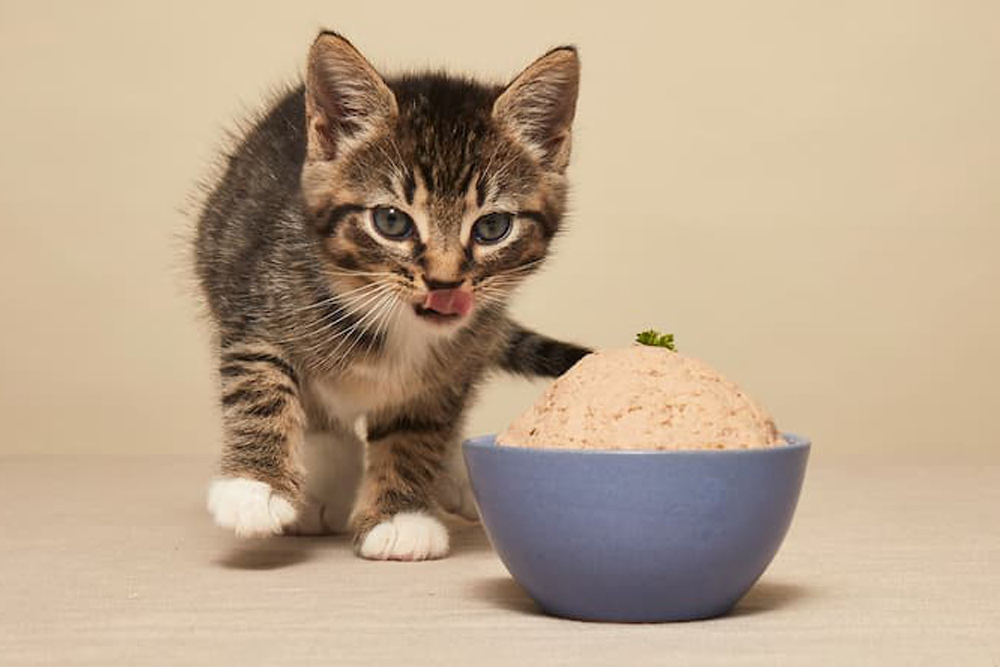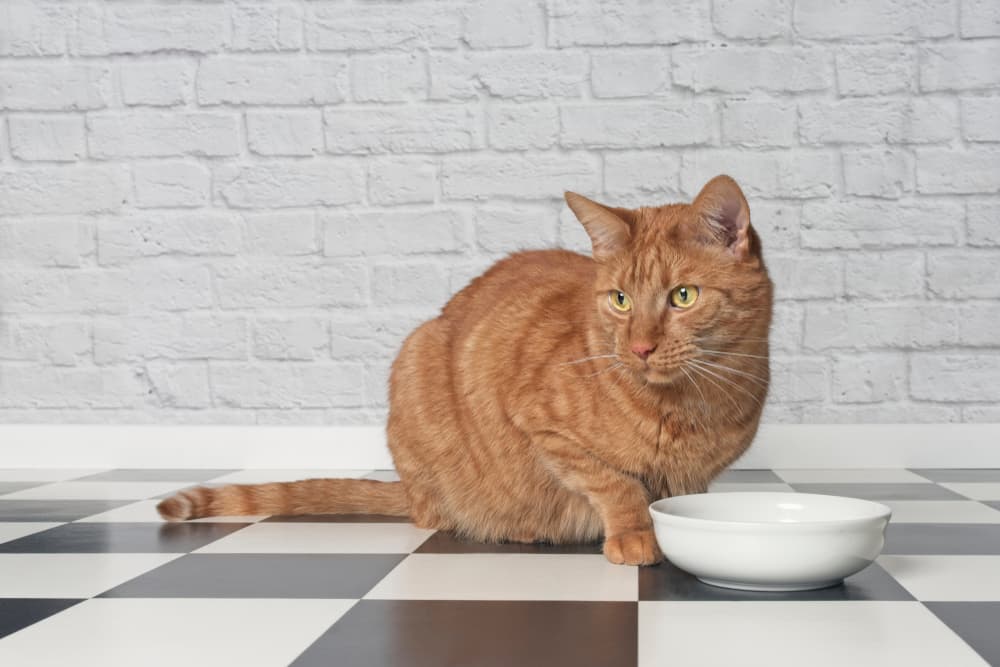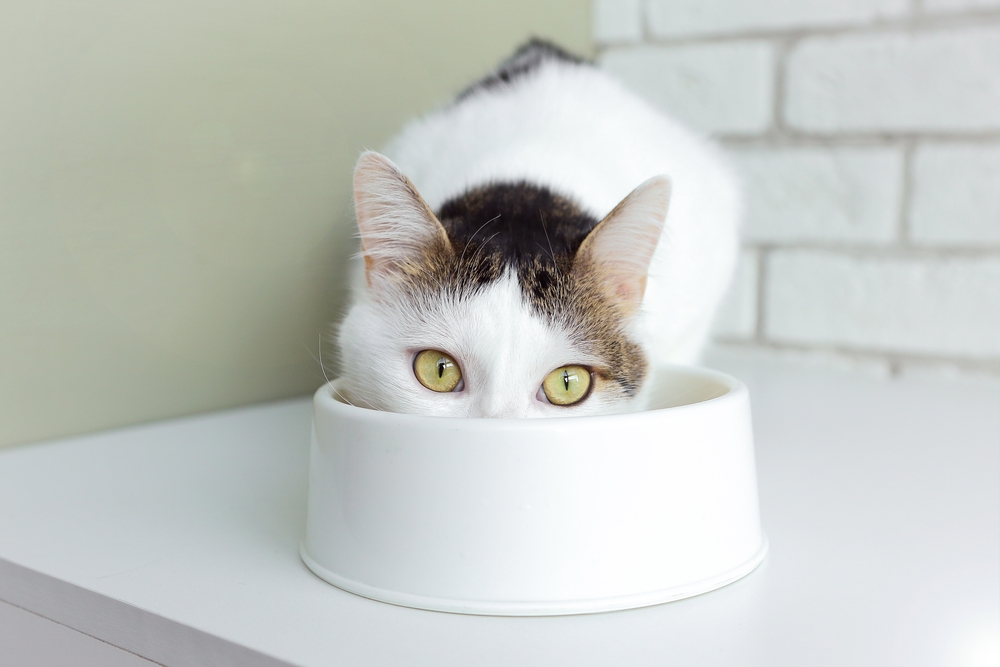8 Best Grain-Free Cat Foods in 2025
by Ysolt Usigan
Updated on February 29, 2024
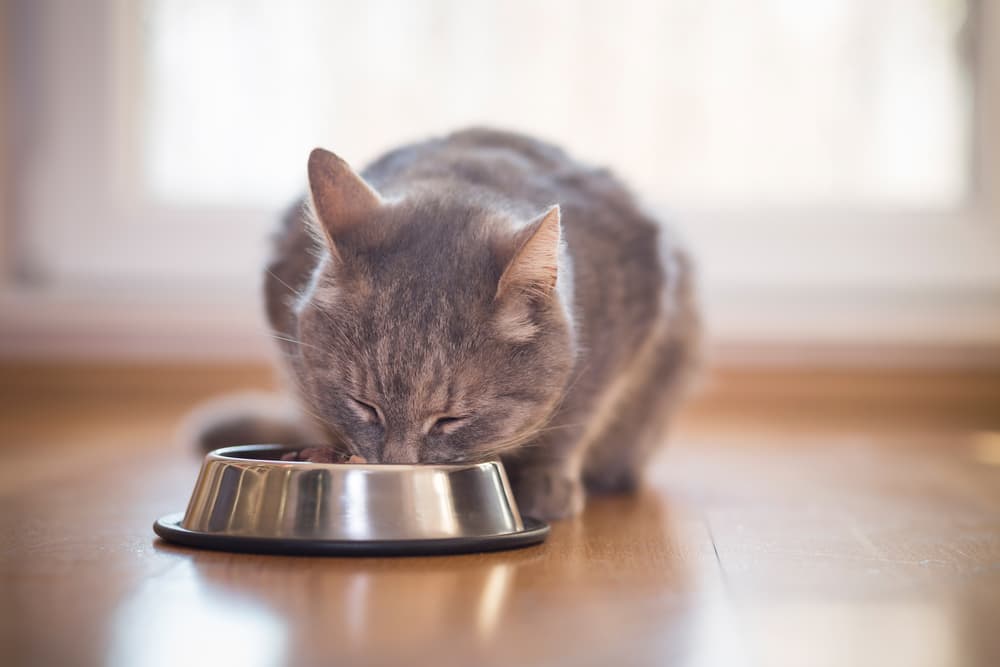
Cats are carnivores. They need meat to survive. However, many cat foods on the market combine proteins with other ingredients, like vegetables and grains, which don’t always agree with all cats. Enter grain-free cat food, which doesn’t have wheat, rice, barley, corn, or other grain sources.
You may have heard of the benefits of grain-free cat foods. In fact, many cat foods are marketed to be “healthier” options, but what does that mean exactly? In this article, we’ll provide insights and advice on just that, as well as our selections for the best grain-free cat food out there.
Our Top Grain-Free Picks
All featured products are chosen at the discretion of the Vetstreet editorial team and do not reflect a direct endorsement by the author. However, Vetstreet may make a small affiliate commission if you click through and make a purchase.
- Best Overall Grain-Free Cat Food: Weruva Truluxe Grain-Free Canned Cat Food
- Best Wet Grain-Free Cat Food: The Honest Kitchen Grain-Free Caté
- Best Dry Grain-Free Cat Food: Purina Beyond Simply Grain-Free Natural Dry Cat Food
- Best Limited Ingredient Grain-Free Cat Food: Reveal in Broth Grain-Free Wet Food
- Best Fresh Grain-Free Cat Food: Smalls Cat Food
- Best Raw Grain-Free Cat Food: Stella & Chewy’s Freeze-Dried Raw Cat Dinner Morsels
- Best Grain-Free Kitten Food: Blue Buffalo Wilderness High-Protein Grain-Free Kitten Paté
- Most Affordable Grain-Free Cat Food: Rachael Ray Nutrish Natural Wet Cat Food
8 Best Grain-Free Cat Foods of 2025
All featured products are chosen at the discretion of the Vetstreet editorial team and do not reflect a direct endorsement by the author. However, Vetstreet may make a small affiliate commission if you click through and make a purchase.
Best Overall Grain-Free Cat Food
Our Pick: Weruva Truluxe Grain-Free Canned Cat Food

This grain-free, gluten-free wet food is a favorite of my own three cats, and it’s highly rated on several retailers’ sites. Not only are the ingredients (grass-fed beef, cage-free chicken, and dolphin-safe wild caught tuna – just to name a few) ethically sourced, its tasty morsels in gravy and shredded proteins are sure to satisfy even finicky felines. Plus, it’s available in two different can sizes for added convenience.
Pros
- Sustainably sourced ingredients
- Wide selection of flavors; order individually or a variety pack
- GMO and MSG free
- Available in 3 oz or 6 oz cans
Cons
- Weruva is one of the pricier varieties of cat food out there
Best Wet Grain-Free Cat Food
Our Pick: The Honest Kitchen Grain-Free Caté
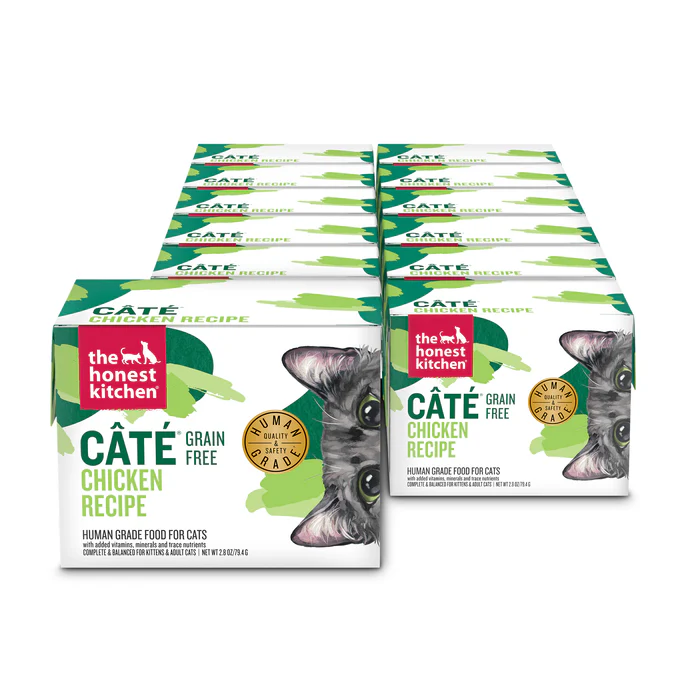
Get 40% off your first purchase at The Honest Kitchen with code 40GREATPET
One of the things we appreciate about The Honest Kitchen is their commitment to using thoughtfully sourced ingredients, and this grain-free caté is no exception. The 100% human-grade wet cat food contains high-quality proteins and beneficial ingredients without any fillers, GMOs, corn, soy, or artificial flavors, colors, or preservatives. Cats will love the variety of flavors and luscious paté texture, and pet parents will feel great about serving it.
Pros
- High in protein
- Thoughtfully sourced, human-grade ingredients
- No fillers, GMOs, feed-grade ingredients, corn, soy, wheat, or artificial flavors, colors, or preservatives
- Available in a variety of recipes: chicken, turkey, salmon & cod, salmon & turkey, and beef & chicken (can be purchased as a variety pack)
Cons
- Higher price point
- Some customers found the packaging to be messy when opened
Best Dry Grain-Free Cat Food
Our Pick: Purina Beyond Simply Grain-Free Natural Dry Cat Food

When you think of dry pet food, you probably automatically assume it must be filled with carb-heavy grains, but that’s not always the case. This grain-free dry cat food is made of wild-caught whitefish and cage-free egg – no corn, wheat, soy, or poultry by-product meals. High in protein, this dry food also comes packed with natural probiotics, which are great for your cat’s digestive health.
Pros
- Great source of protein
- No preservatives or artificial colors/flavors
- Formulated with natural probiotics, as well as added vitamins, minerals and nutrients
- Made in the United States
Cons
- Some customers mentioned that it has a strong fish smell
Best Limited Ingredient Grain-Free Cat Food
Our Pick: Reveal in Broth Grain-Free Wet Food
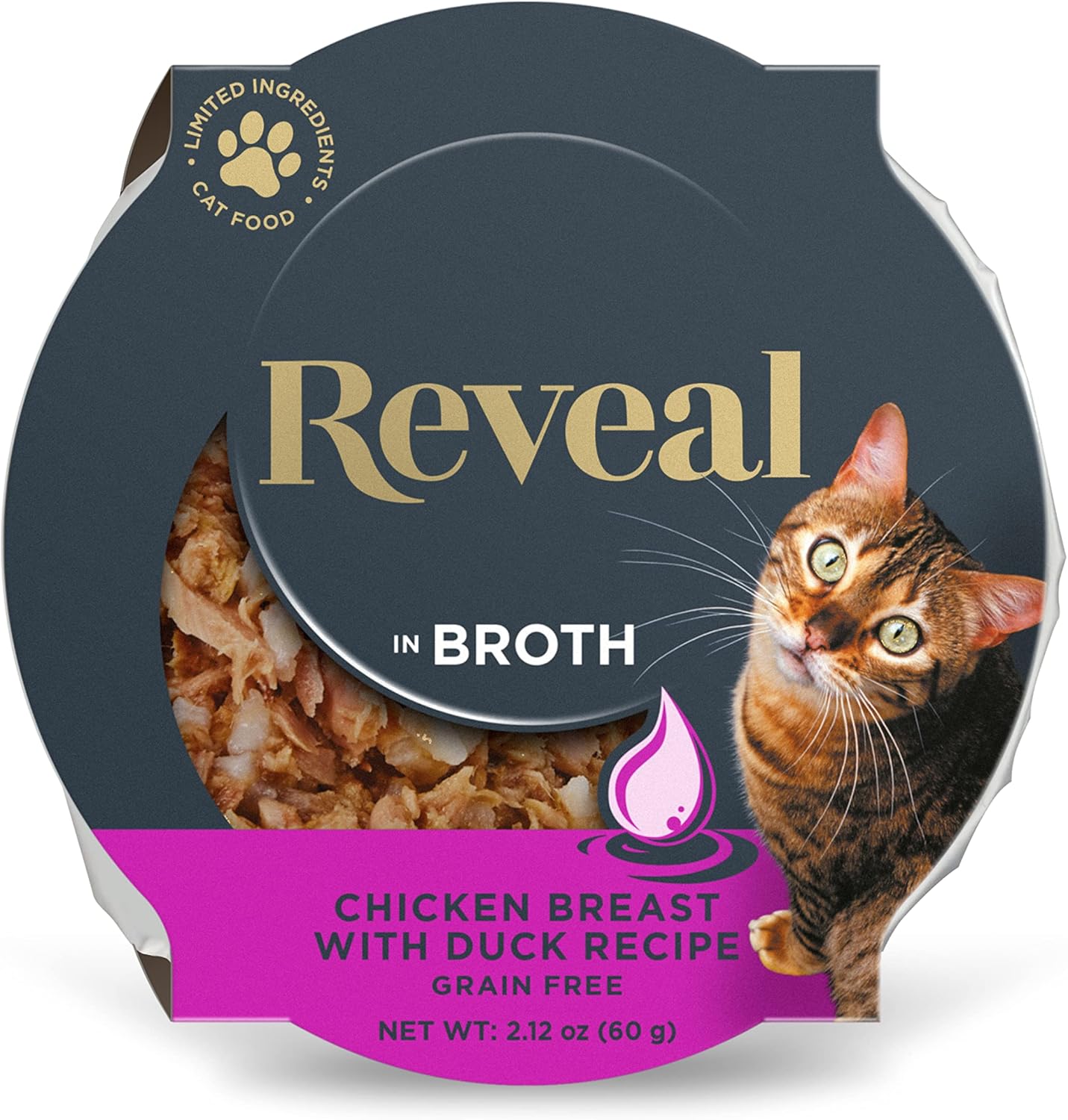
When you open the can of Reveal, it’s clear how many ingredients are inside: very few. On its label, you’ll see three to four recognizable items listed, which can be comforting to parents of cats with food allergies. This limited-ingredient, grain-free wet cat food is also 100% natural and available in several different flavors.
Pros
- Simple, all-natural ingredients
- Multiple flavors available
- Great source of Omega-3 and Omega-6
- No artificial flavors, colors, or preservatives
Cons
- Meant to be served alongside dry cat food for a balanced diet
Best Fresh Grain-Free Cat Food
Our Pick: Smalls Human-Grade Fresh Cat Food
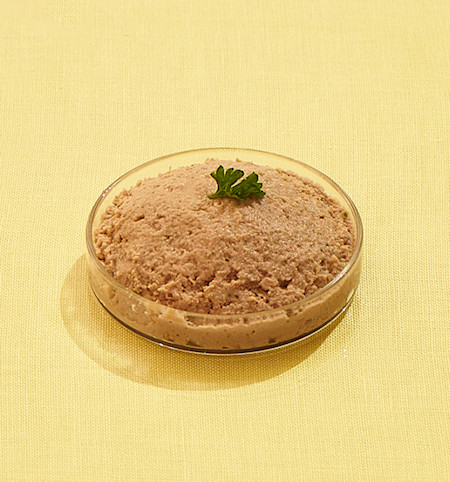
32% off + free treats for life with code VETSTREET5
Smalls, a subscription meal service for cats, offers high-protein, grain-free meals with no fillers. The fresh recipes feature ingredients that are humanely harvested, sustainably sourced, and packed with nutrition due to the brand’s preparation practices. Choose from three different protein options (bird, other bird, or cow), and textures (smooth, ground, or pulled).
Pros
- Human-grade, all-natural food
- Multiple protein and texture options
- Ingredients are sourced from the US or Canada
- Every batch is tested for pathogens and has to pass the company’s high standards of excellence
- In addition to fresh, Smalls also offers freeze-dried food options
- USDA certified
Cons
- Fresh cat food might be super different from what your cat is used to and could be a transition
- Must be refrigerated or frozen
- Only available online on Smalls.com
Best Raw Grain-Free Cat Food
Our Pick: Stella & Chewy’s Freeze-Dried Raw Cat Dinner Morsels

Aiming to give cats a diet similar to what their ancestors ate in the wild, Stelly & Chewy’s presents tasty morsels with natural proteins in a freeze-dried raw variety. Good for digestion, teeth, gums, skin, coat, and overall vitality, this grain- and gluten-free option delivers a balanced diet with no unnecessary fillers. Plus, it comes in a variety of flavors your cat is sure to love.
Pros
- Raw diets are known to mirror cats’ diets in the wild
- Several responsibly sourced proteins/flavors to choose from, like chicken, salmon and chicken, duck duck goose, rabbit, salmon and cod, and turkey
- Fortified with vitamins and Omega fatty acids
- Great for cats or kittens
- Made in small batches with minimal production
Cons
- Texture may be different than what cats are used to
Best Grain-Free Kitten Food
Our Pick: Blue Buffalo Wilderness High-Protein Grain-Free Kitten Paté

Young cats will love Blue Buffalo’s kitten paté. This grain-free wet cat food is packed with plenty of vitamins and minerals, and you won’t find corn, wheat, soy, or poultry by-product anywhere in these cans. Rich in protein, the natural, gluten-free food also presents a smooth texture that won’t intimidate new eaters of solids.
Pros
- No artificial flavors or preservatives
- Paté form is easy on tiny kitten jaws
- Includes DHA to help kittens’ brain development
- Available in chicken and salmon; variety pack lets your kitten sample both flavors
Cons
- Salmon recipe does also contain chicken, which could pose an issue for kittens with sensitivities to poultry
Most Affordable Grain-Free Cat Food
Our Pick: Rachael Ray Nutrish Natural Wet Cat Food

Made without grains, by-products, or artificial flavors/preservatives, this grain-free wet cat food boasts either chicken or fish as its number-one ingredient, depending on the flavor you choose – and there are a bunch of yummy ones available. It also includes plenty of vitamins, minerals, and taurine for added health benefits and comes in at a price that won’t totally break the bank.
Pros
- Great price point
- Available in several chicken or fish flavors (or sometimes a combo of both!)
- Includes added vitamins, minerals, and taurine
- No chicken by-product or artificial flavors/preservatives
Cons
- Contains carrageenan
- Some customers said their cat only ate the gravy, not the actual food
What is Grain-Free Cat Food?
Grain-free food for cats excludes wheat, corn, and other sources of grains.
It’s also important to note that “a grain-free diet is not necessarily carbohydrate-free, as ingredients such as potato, tapioca, lentils, peas, carrots, beans, cranberries, etc., [might be] used in commercial grain-free cat food,” says Dr. Alex Schechter, a veterinarian with Pure Paws of Hell’s Kitchen and Burrwood Veterinary. “Grain-free foods are high in protein; they are gluten-free cat food by default.”
A cat may require grain-free food due to an allergy, and when shopping, Dr. Colleen Lambo, a veterinarian with at-home veterinary service The Vets, has some advice: “It is best to focus on diets formulated to avoid your cat’s specific grain allergy,” she says. “Grains in general are not harmful to cats. Wild cats often eat the stomach of their prey first, which is full of the healthy, tasty grains consumed by the prey. Their in-home diets should include appropriate levels of these grains to meet their needs.”
How We Made Our Selections
In addition to personal experience, we considered a variety of factors when selecting the grain-free cat food for this roundup, including:
Veterinarian recommendations. We talked to several veterinarians to get their take on grain-free cat food options. According to them, the trusted brands that use quality ingredients and undergo the highest levels of testing include (but are not limited to): Purina, Weruva, Smalls, Blue Buffalo, and Royal Canin.
Ingredient quality. Beyond ensuring that each selection is, in fact, grain free, we took a look at the included ingredients, calling out the selections that are all natural, free from artificial additives, etc.
Reviews. We also scoured retailers to uncover the highly rated grain-free cat food varieties with thoughtful reviews.
Price point. Finally, we took cost into consideration, providing options that would work for a variety of budgets.
Grain-Free Cat Food Buyer’s Guide
Ready for your kitty to go grain-free? Before you buy, take a look at our helpful tips to ensure you’re choosing the right grain-free cat food for your feline.
Investigate Ingredients
“The most crucial ingredient to search for in grain-free cat food, and any cat food, is protein,” says Dr. Schechter. “Cats need protein to maintain their daily nutrition, and some grain-free cat meals also contain carbs like sweet potatoes, peas, or lentils to replace the grains. If these products are higher than the amount of protein in the cat food, it can be unhealthy for your pet.”
Also, he adds, “Reading the food’s labels and the ingredient list is also vital to ensure that there are no extraneous fillers or additives.”
Choose Quality Brands
It’s also important to do your research on the brand you’re considering to make sure they’re producing the quality food your cat deserves. “The benefits of purchasing a diet that is formulated by a large and well-known company is that these companies tend to have research behind their diet to support any claims and any advantages the specific diet will have for the targeted pet population,” says Dr. Shadi Ireifej, veterinarian, board-certified specialist, and owner of VetTriage, a vet telehealth service.
Look for Veterinarian-Formulated Options
We love seeing pet foods that are formulated by experts, and Dr. Schecter agrees. “It is usually advisable to look for diets developed by veterinarians or that have undergone third-party testing,” he says. “This guarantees the food’s safety and high standards.”
“It would be assumed that a veterinary-formulated diet would be of added benefit, but these diets should at minimum meet the standards of AAFCO for the targeted pet population,” adds Dr. Ireifej.
Think About Your Cat’s Preferences
Don’t forget to factor in your cat’s specific preferences. If you want to go grain-free, you can try dry, wet, or both. Some cats prefer dry over wet, or vice versa. There are also fresh and raw options out there that are high in protein, but some cats are not fans as it’s not what they’re used to. This is all about texture and smells. Cats can be fickle, and you’ll want to take their cues into consideration.
Talk to Your Veterinarian
It’s always a good idea to talk to your veterinarian if you need guidance on what to feed your cat – especially when there are grain sensitivities or allergies involved. They will be able to identify if your cat has specific nutritional needs (grain-free or not).
Grain-Free Cat Food Pros and Cons
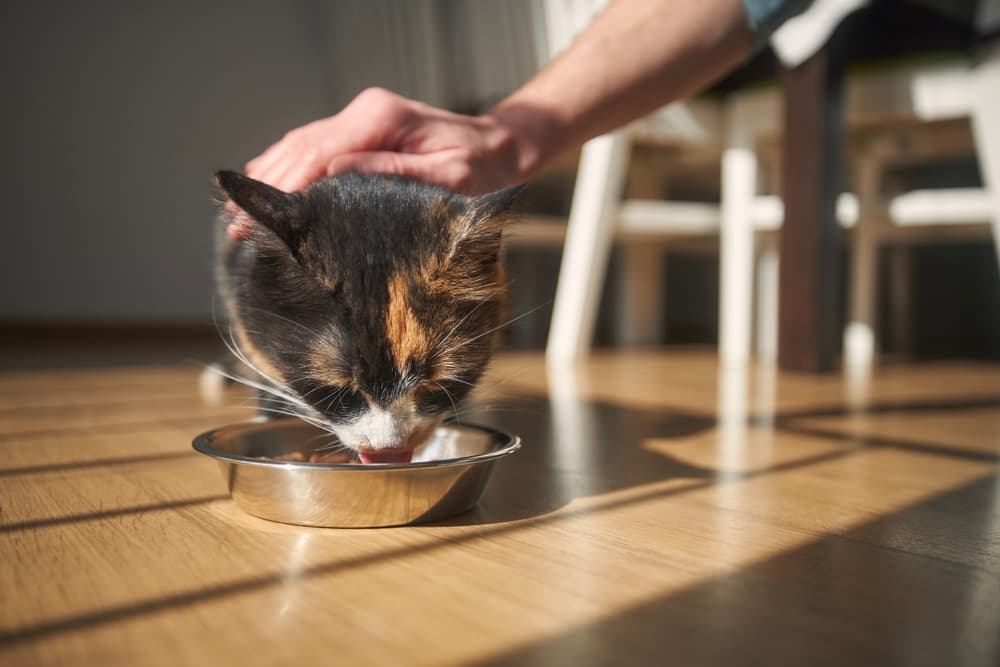
As the saying goes, nothing is perfect. There are benefits and drawbacks to most things in life, and the same goes for grain-free cat food. Let’s go over the pros and cons of this specific food type.
Pros
Grain-free food is great for cats who have sensitive skin and digestive intolerances, says Dr. Schechter. “Due to the starchy and dry nature of carbohydrates, grains are complex to digest for a cat,” he explains. “Grain-free cat food, when not loaded with other carbohydrates, is an excellent alternative to a cat’s natural diet and offers the best nutritional value. It helps to reduce allergic reactions, is easy to digest, and also helps to get the feline a shiny and lustrous coat.”
Schechter also points out that grain-free cat food contains high-quality primary protein sources, such as chicken, beef, fish, and eggs. “These have better bioavailability and provide more energy than those found in grain-based foods. High-quality proteins help support a cat’s overall health and development and maintain muscles and bones.”
Lastly, he adds, less grains and carbohydrates can also reduce the risk of diabetes and obesity.
Cons
Now for the cons. Since protein is the main component in grain-free cat food, it can also mean that grain-free cat food is higher in fat. “If you are not feeding your pet the correct portion, grain-free food can cause weight gain in the pet,” Dr. Schechter cautions.
Ireifej also notes that there are not enough studies evaluating the advantages and disadvantages of feeding a cat a grain-free diet. Most of the research is anecdotal evidence.
Grain Free Cat Food and Heart Disease
A few years ago, the FDA released information about grain-free foods causing heart problems in some pets, particularly dogs. While there were a couple of cat-related incidents reported, Dr. Ireifej points out that, “There are currently no reports supporting that a grain-free diet in cats predisposes them to cardiac disease.”
Switching Your Cat to a Grain-Free Food
Before making the move to a grain-free diet for your cat, Schechter has some advice to make the process as successful as possible:
Begin gradually. Over a few days, gradually combine the new grain-free meals with the old food. This will prevent intestinal problems and aid in your cat’s adjustment to new food.
Opt for a high-quality meal. To avoid artificial preservatives, colors, and flavors, look for grain-free food produced with quality ingredients.
Keep an eye on your cat’s health. Look for any changes in your cat’s actions or look that can point to a food intolerance or allergy. Consult your veterinarian right away if you detect any changes.
Offer an abundance of water. Dehydration can result from a grain-free diet’s higher protein and fat content. Make sure your cat has plenty of access to clean, fresh water.

